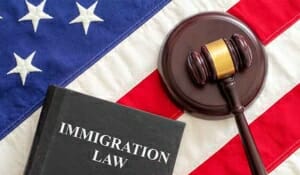The CARES Act: Unprecedented Relief for Small Business
Applicants will be asked to make a good-faith certification that the uncertainty of current economic conditions makes the loan request necessary to support ongoing operations and that the loan proceeds will be used to retain workers and maintain payroll or make mortgage, lease, or utility payments.
How much can be borrowed?
Eligible businesses may borrow up to 2.5 times “monthly payroll costs,” not to exceed $10 million. Monthly payroll costs include salaries, wages, commissions, vacation and sick pay, group health benefits, and state and local taxes based on the monthly average for the year preceding the loan.
Exclusions.
Excluded from payroll costs are:
- compensation to an employee to the extent it exceeds $100,000 annualized (the same limitation applies to the earnings of a sole proprietor, independent contractor, or self-employed person);
- federal payroll and income taxes; and
- sick leave wages for which a tax credit is allowed under other COVID-19 relief provisions (discussed below).
For example, a business with $120,000 in monthly payroll costs (and no exclusions) can borrow up to $300,000.
No collateral or personal guarantee is required.
How much of the debt can be forgiven?
The borrowing business is eligible for forgiveness of a portion of the loan principal in an amount equal to the sum of all:
- payroll costs (excluding that portion of an employee’s salary in excess of $100,000 annualized),
- mortgage interest ordinarily paid by the business;
- utility expenses, including electric, gas, water, telephone, or internet (collectively, the “Covered Expenses”) made during the eight-week period beginning on the loan origination date.
Using the prior example, if $300,000 or more in Covered Expenses are paid during the eight-week period, the entire $300,000 loan is eligible for forgiveness.
The amount of loan forgiveness will be reduced in accordance with any (i) reduction in the average number of full-time equivalent employees per month (FTEs) or (ii) reductions of greater than 25% on salaries up to $100,000.
Employee or wage reductions occurring between February 15 and April 26, 2020, will not reduce the amount of loan forgiveness if the borrower eliminates that reduction by June 30, 2020.
As to any portion of the loan that is not forgiven, there shall be complete payment deferment relief for a period of not less than six months, but not to exceed one year. The maximum interest rate is 4% and the maximum maturity shall be 10 years from the date the borrower applies for loan forgiveness.
Additional “Disaster Assistance” Loans.
The CARES Act provides for the issuance of up to $500 billion in “disaster assistance” loans of up to $2 million to a small business that has suffered substantial economic injury (i.e., is unable to meet its obligations and pay its ordinary and necessary operating expenses) due to COVID-19.
The loan amount will be based on actual economic injury and the company’s financial needs. The loan proceeds are to be used to help meet financial obligations and operating expenses that could have been met had the disaster not occurred.
The application is made to the SBA, which will determine the loan amount.
Collateral is required for loans over $25,000, but a disaster loan is not expected to be declined due to the lack of collateral.
Personal guarantee on advances and loans of $200,000 or less are waived during the covered period (1/31/20 – 12/31/20) for this loan.
An applicant may request and receive a $10,000 advance within three months of the application and is not required to repay it. Other than that, there is no loan forgiveness under this program.
Businesses are not precluded from applying for loans under both programs, though obtaining a loan under one program may affect the ability to receive benefits under the other.
The CARES Act requires the SBA to establish regulations no later than 15 days after its enactment, i.e., by April 11, 2020.
TAX RELIEF
Payroll Tax Credit.
Employers will be eligible to receive a refundable payroll tax credit equal to 50% of wages paid by employers to employees during the COVID-19 crisis. It is available to employers whose (1) operations were fully or partially suspended due to a shutdown order related to COVID-19 or (2) gross receipts declined by more than 50% when compared to the same quarter in the prior year.
Net Operating Losses (NOLs).
NOLs arising in a tax year beginning after December 31, 2018, and before January 1, 2021, can be carried back to each of the five tax years preceding the tax year of such loss. (Code Sec. 172(b)(1) as amended by Act Sec. 2303(b)(1)). The CARES Act also:
- temporarily removes the taxable income limitation to allow an NOL to fully offset income. (Code Sec. 172(a), as amended by Act Sec. 2303(a)(1))
- temporarily modifies the loss limitation for noncorporate taxpayers so they can deduct excess business losses arising in 2018, 2019, and 2020. (Code Sec. 461(l)(1), as amended by Act Sec. 2304(a))
- temporarily and retroactively increases the limitation on the deductibility of interest expense under Code Sec. 163(j)(1) from 30% to 50% for tax years beginning in 2019 and 2020. (Code Sec. 163(j)(10)(A)(i) as amended by Act Sec. 2306(a)).
Sick Pay Leave Tax Credit.
Employers with fewer than 500 employees are entitled to take a tax credit for up to ten days at 100% of the employee’s regular pay rate, capped at $511 per day or $5,110 in the aggregate. It applies when the employee:
- is subject to a federal, state, or local quarantine or isolation order related to COVID-19;
- has been advised by a health care provider to self-quarantine due to concerns related to COVID-19; or
- is experiencing symptoms of COVID-19 and seeking a medical diagnosis.
There also is a tax credit of $200 per day ($2,000 total) if the employee (a) is caring for an individual who is quarantined or (b) is showing symptoms of COVID-19, or (c) the employee’s minor child’s school or child care provider is closed due to COVID-19.
Family Leave Tax Credit.
Employers with fewer than 500 employees are entitled to a tax credit for up to 10 weeks of qualifying leave at two-thirds of the employee’s regular pay rate, capped at $200 per day or $10,000 in the aggregate. It applies when an employee cannot work because they must care for a minor whose school or care provider is closed or unavailable due to a coronavirus emergency as declared by a federal, state, or local authority.
The CARES Act provides unprecedented financial relief for America’s small businesses. Hopefully, it will achieve its objective and help businesses get through this unprecedented time.


















